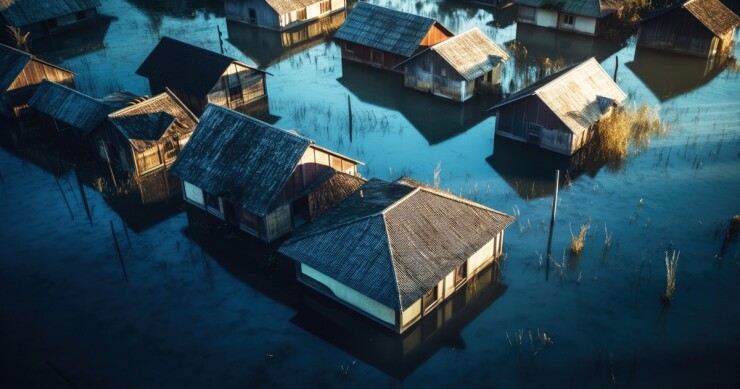If you ask most homeowners, they will tell you either their homeowners policy covers flood or that they don't need flood insurance. The misunderstanding persists
A constant stream of damage reports are coming from rain, high surf, sudden arroyos and overflowing lakes and rivers where lenders do not require flood insurance. Areas deemed low-risk by the National Flood Insurance Program are seeing more flash floods. In April of this year for example,
The weight of water damage
In 1968, the federal government intervened when homeowners and insurers started excluding the rising cost of flood coverage from their policies. The burden of recovery was shifting to the government and needed funding. The National Flood Insurance Program (NFIP) was created along with a requirement to buy flood insurance from them in order to have a loan guaranteed by programs such as Fannie Mae or Freddie Mac. The requirement applied to houses in "special hazard zones." Insurers were relieved from offering the coverage themselves. Communities in special hazard zones received lower rates if the local and state government invested in flood control and mitigation. The zones were never created to indicate where there is and is not flood risk, but to incentivize communities with high (one in 100-year) risk to invest in infrastructure to reduce the damage and injury caused.
The average flood insurance policy costs
Climate change and urbanization are changing who is at risk
Today, 57 years after NFIP was founded, the government-sponsored model is being challenged by climate change and rapid urban development. The severity, duration and frequency of storms is also increasing. Don't believe the television news when they say a storm or flood is a "one in 500-year event." Those odds include the chance the exact storm happens at the exact location. Those "500-year events" happen every year in some location.
Housing policies are increasing the chance of catastrophic events. Populations are increasing in areas at risk – like barrier islands – because they are so pleasant to live in when not flooded. Cities are allowing the development with rezoning. The new construction often replaces woodlands and grasslands with concrete, paving natural floodplains. Asphalt and other impervious surfaces reduce the land's ability to absorb water and mitigate flood risk naturally. Water tables and naturally created conduits for rare rainfalls are blocked, emptied or graded away. Water runs off hard surfaces quickly, overloading drainage systems in areas far from the water sources. As it heads straight through even properties at higher ground elevations, it collects pollutants before joining the sea or other natural waterway.
The
Mitigating flooding risks
Agents have a big opportunity to help homeowners understand that home insurance policies specifically exclude flood damage. Offer a separate flood policy whether or not they are in an NFIP special hazard zone. They buy many optional coverages to protect their homes and personal belongings from damage and flood should not be an exception. What customers do not know can hurt them.
Insurers are better off warning of the need for flood insurance than having to tell a customer they have no way to recover. Even if not paying for the claim, a claims representative can provide guidance on how to approach the flood claims process if covered.
Utilizing technology is a start, with innovation transforming everything from risk assessment to customer experience. We use advanced risk modeling and data analytics, satellite imagery and remote sensing, reward users of smart devices, and model climate change. IT allows companies to paint a more accurate picture of flood risk for their customers and guide them appropriately.
Not coincidentally, the homeowner who wants to buy flood coverage even if not required is a better and more responsible policyholder.
Flood insurance is no longer a niche product or a "nice to have" for homeowners—it is a necessity, and it is a mistake to avoid paying for coverage even if it is not required. Environmental risks evolve and the industry's approach must as well.






